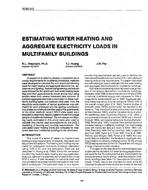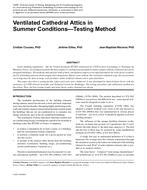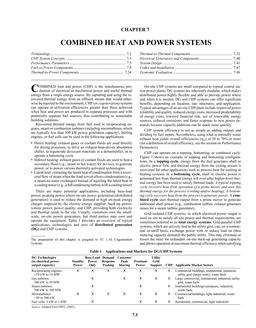Click here to purchase
ABSTRACT This paper describes in detail a process for integrating resilience goals within the Energy Master Planning Process. Focusing on the district scale, methodologies are discussed to quantify the resilience benefits of energy system designs and determine trade-offs between resilience and blue-sky performance.Systems are aggregated to a mission function level with the goal of keeping critical functions online during emergency events. We outline how to down-select the top threats for the area, how to apply the corresponding threat profiles and fragility curves to the system’s infrastructure elements, and how to evaluate resilience metrics using systems modeling techniques.Design options to improve the system’s resilience to the selected threats are suggested by the process. All steps of the process are applied to a notional example. The paper concludes with a discussion of the capability gaps and a path forward for implementing this process for energy master planners. This paper is based on research performed under the International Energy Agency’s Energy in Buildings andCommunities Program Annex 73, focusing on development ofguidelines and tools that support the planning of Net ZeroEnergy Resilient Public Communities as well as research performed under the Department of Defense Environmental Security Technology Certification Program project EW18-D1-5281, “Technologies Integration to Achieve Resilient, Low-Energy Military Installations.”
Citation: 2020 Winter Conference, Orlando, FL Technical Papers
Product Details
- Published:
- 2020
- Number of Pages:
- 21
- Units of Measure:
- Dual
- File Size:
- 1 file , 4.1 MB
- Product Code(s):
- D-OR-20-021


